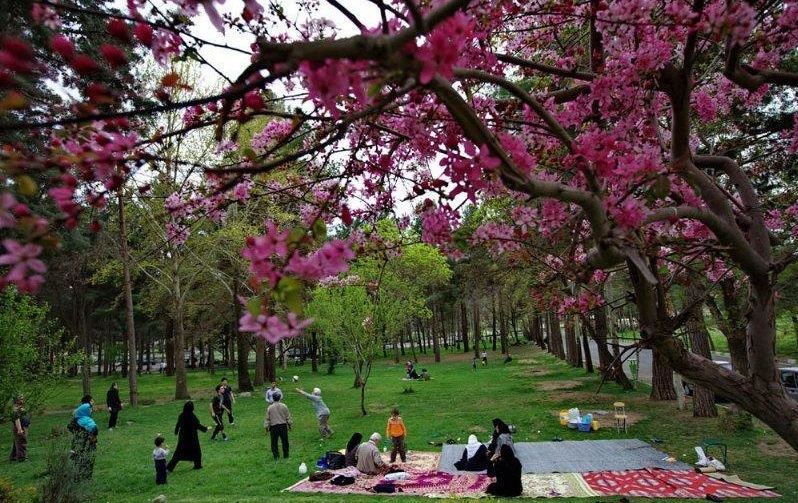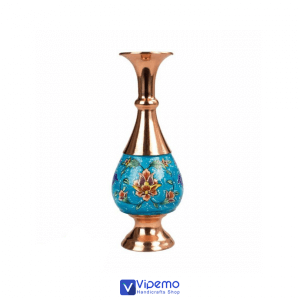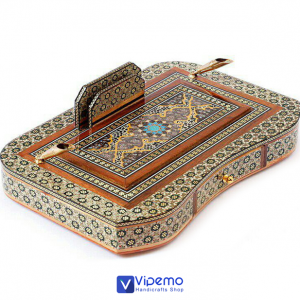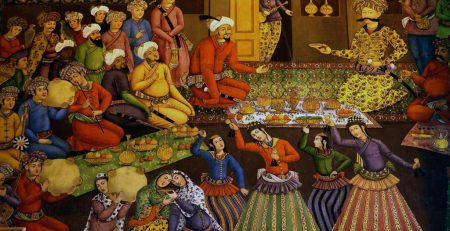
Iranian New Year (Nowruz)
Mohammad2020-03-31T08:59:38+00:00Nowruz
The greatest Iranian holiday, Nowruz (literally “new day”), is celebrated on March 20 or 21 and commemorates the entrance of the sun into the sign of Aries at the vernal equinox. The Iranians believe that Nowruz was instituted by King Jamshid; it is known for certain to have seen celebrated for at least 2500 years. It is the only festival of ancient Persia that has not been displaced by Islamic holidays. The Iranians never fail to celebrate it, except when the movable lunar calendar of Islam causes some mourning ceremony to occur the same time.
The medieval version of the holiday lasted a week, during which there was a general carnival with bonfires, acrobats, jugglers, masked games, and gift-giving. Today’s Nowruz lasts two weeks. During this time, schools and businesses traditionally close and people spend their time visiting each other. In the weeks before Nowruz,people start to buy new clothes and clean their houses from top to bottom. Hajji Firuz – a black faced character in the red costume – appears in the streets during the weeks before Nowruz.


Chaharshanbeh-Suri

Nowruz is preceded by another ancient ceremony, Chaharshanbeh-Suri (literally meaning “Wednesday Fire”). It is celebrated on the Tuesday evening before the last Wednesday of the old year. On this night, people gather On in the streets to jump over a fire for luck while chanting “Your redness (health) is mine; my paleness (pain) is yours”. Groups of young men, their faces concealed by veils, go from door to door banging s spoon against a metal bowl asking for sweets or money. Another old and almost obsolete ritual is Falgush (fortune hearing) when people try to guess the future by walking around in the street and treating chance words they over hear as omens.
Haft Sin


On Nowruz eve, families gather for a feast where the table includes Haft Sin, seven things whose names begin with the letter “S” in Persian. Today the seven S’s typically include Sabzeh (home grown sprouts), Samanu (the juice of crushed ears of green wheat), Sib (apples), Sonbol (hyacinth), Senjed (jujube fruit), Sir (garlic), and Somagh (sumac). In addition to the seven S’s, there are may also be the Koran, painted eggs gold coins, a bowl with goldfish, a mirror, and candles.
Each item symbolizes something; for example, the sprouts and Samanu represent fertility and rebirth of spring, hyacinth symbolize beauty, apples and jujube bring sweetness, goldfish is a symbol of life, garlic and sumac represent health, coins bring prosperity, while candles are symbols of light and goodness. The traditional meal of this day is Sabzi polo – a pilaf with green herbs, often served with fish. At the moment of the equinox, people kiss and exchange good wishes, and children are given gifts.
Sizdah-be-Dar


The 13th of Nowruz is called Sizdah-be-Dar (“getting rid of thirteen”). On this day, people leave their houses and go picnic, they throw their plateful of Sabzeh into running water. The Sabzeh is supposed to have collected all the sickness and ill fate that lurks in the path of family throughout the coming year. Touching someone else’s Sabzeh on this day or bringing it home is therefore not a good idea because it may result in absoring someone else’s pain and hardship.
Vipemo Products
-
Firooze Koobi, Firooze Koobi, Jug
Sake Jug – Turquoise Inlaying – Size 2
5.00 out of 5€1,524.00€1,200.00Add to cartQuick View -
Candy Dish, Firooze Koobi, Nut Bowl Dish, Sugar/Candy Pot
Candy/Nuts Bowl Dish – Size 7
0 out of 5€1,500.00€1,300.00Add to cartQuick View -
Candy Dish, Firooze Koobi, Nut Bowl Dish, Sugar/Candy Pot
Candy/Nuts Bowl Dish – Size 1
€182.000 out of 5Add to cartQuick View -
-
-
-
-



























Leave a Reply